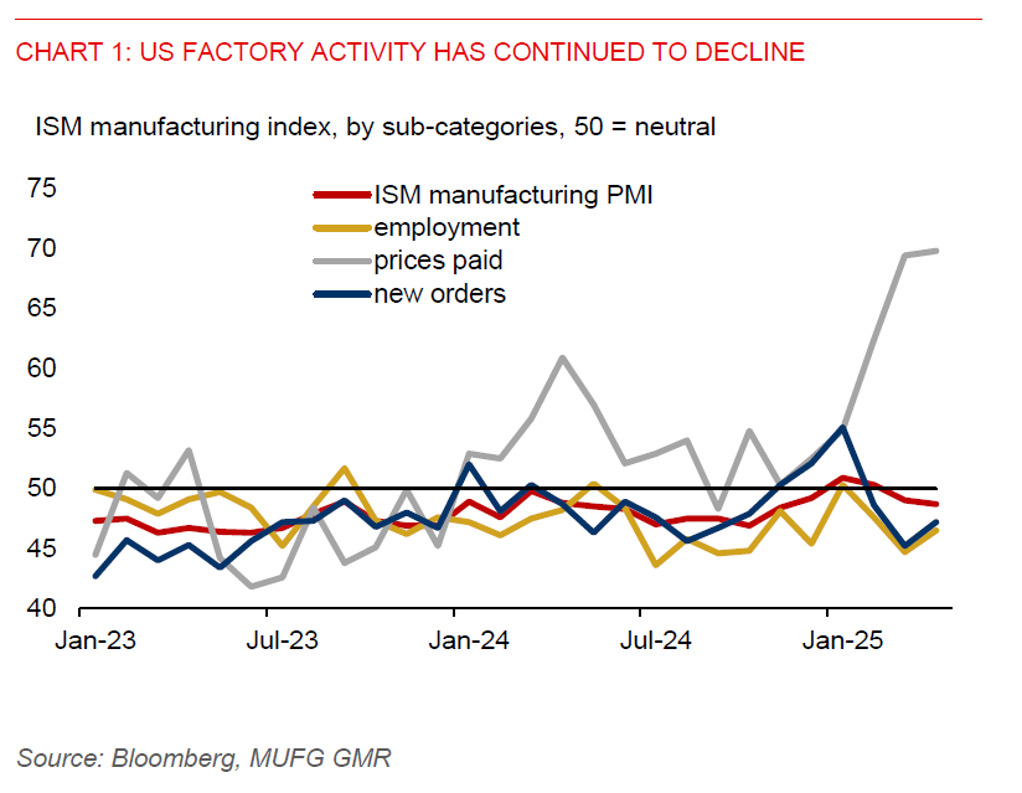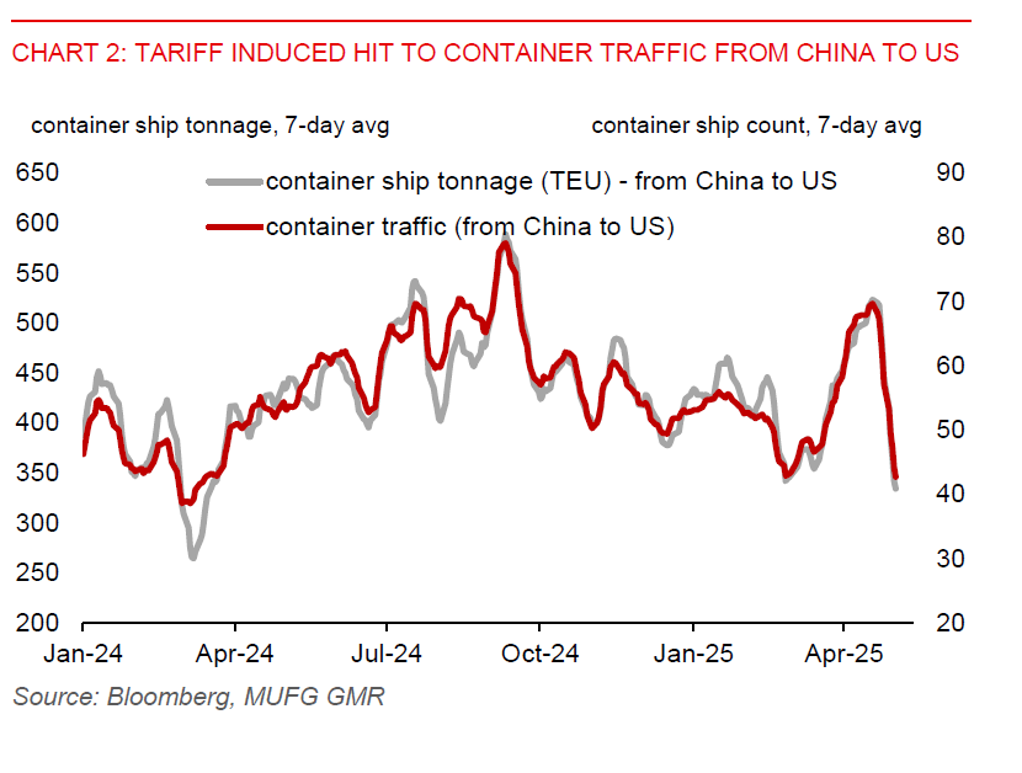Ahead Today
G3: US nonfarm payrolls, unemployment rate, hourly earnings, factory orders, durable goods orders; eurozone manufacturing PMI and CPI; Japan jobless rate
Asia: Manufacturing PMIs, Indonesia CPI, and HK GDP
Market Highlights
A range of US macro data over the past two days has shown signs of a slowdown in the US economy amid heightened economic policy uncertainty. Advance estimates show US Q1 GDP fell 0.3%qoq annualized, from 2.4% growth in Q4 2024. Personal consumption slowed to 1.8%qoq annualized from 4% in Q4. The private sector added just 62k jobs in April, down from 147k in March. Initial jobless claims rose to 241k in the week ended 26 April, from 223k in the prior week. Personal income growth slowed to 0.5%mom in March, from +0.7%mom in February, though personal spending was resilient, rising 0.7%mom, up from 0.5%mom in February.
In addition, the ISM manufacturing index fell to 48.7 in April from 49.0 in March, reflecting further contraction in factory activity. However, this was better than Bloomberg consensus for a decline to 47.9. The ISM new orders and employment sub-indices picked up modestly to 47.2 (45.2 in March) and 46.5 (44.7 in March) respectively, but still in contraction.
Meanwhile, core PCE inflation eased to 2.6%yoy in March, from 3% in February, in line with market expectations. However, the ISM price index rose to 69.8 in April from 69.4 in March, suggesting there could be upward price pressures in the coming months, possibly due to the import tariffs, which could slow the pace of disinflation in the US. Nonetheless, the moderation in activity and inflation have led to market continuing to price in 5 US rate cuts through the FOMC meeting in April next year.
The Bank of Japan kept its policy rate unchanged at 0.5% in its May policy meeting. It has also halved its growth forecast to 0.5% for this fiscal year amid an ongoing global trade war, while pushing back the timing it expects inflation to reach its 2% target. BOJ Governor Ueda has said that uncertainties are high, but the bank still retains its commitment to raise the policy rate if its economic outlook is realized. The yen fell more than 1% against the US dollar.

Regional FX
The broad US dollar index rose 0.7%, recovering above the 100-level amid a pickup in treasury yields. USDSGD also gained by 0.4%, after finding a floor at the 1.3000-level. There are emerging signs of a tariff-induced slowdown in trade with the US, which could put some renewed pressure on Asian currencies, especially those with heavy reliance on trade. South Korea’s exports to the US fell 6.8%yoy in April, dragged down by declines in exports to the US of autos (-16.6%yoy), semiconductors (-31%yoy), and machinery (-22.6%yoy). Container traffic from China to US have also collapsed since mid-April.

